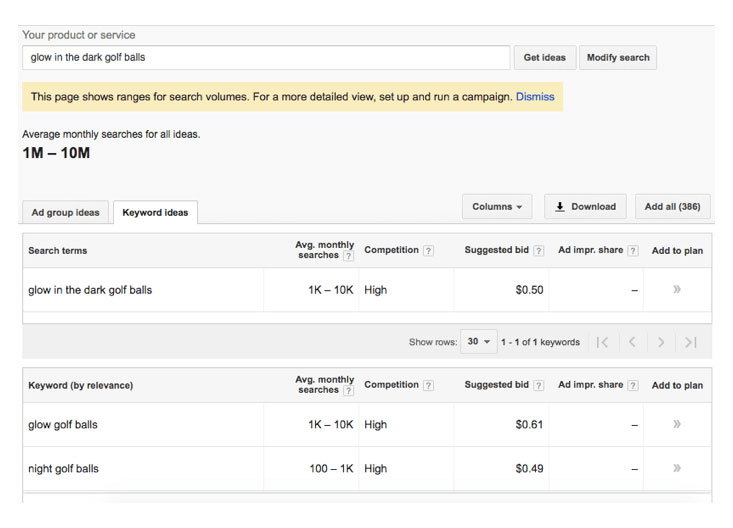Here’s Why You Need a Thought Leadership Content Strategy to Grow Your Brand
If you’re working on a content marketing strategy, it’s more than likely you’ve been told you need to integrate thought leadership content.
But what does that really mean? Just because the term gets tossed around a lot in relation to content execution doesn’t mean it’s just a “buzz word.” The reality is, thought leadership is an effective, worthwhile undertaking that can grow loyalty and trust for your brand.
You just have to do it right.
Thought Leadership is All About Your Audience
Thought leadership is what happens when you put your audience first and revolve your content efforts around them, leveraging the subject matter experts (thought leaders) within your company to execute quality content. To do all this right, you have to be careful to avoid the two mistakes many brands make when it comes to content marketing:
- Making it all about you. Think about a time when you turned to Google for general information. I’m willing to bet you skipped right over anything that seemed like an ad or a marketing pitch for a service and clicked on the first article that looked like genuine, helpful information. It’s even better if you can make it through the entire article without the brand injecting a sales pitch for its product or service. It shouldn’t be a surprise that your audience will behave the same way. Therefore, you want to publish content that provides the information your audience needs–without trying to sell them something.
- Not thinking like your audience. It can be difficult to take a step back from your business and understand that what may seem interesting to you may not be interesting to your audience. One of the most important elements of a thought leadership strategy is understanding what your audience wants and needs so you can deliver content that matters to them–even if it’s different from what you think they would care about.
With these two common mistakes in mind, there are 6 key steps you should follow to develop and execute an effective thought leadership content strategy.
Step 1. Identify Your Audience
You may have a general idea of your target audience, but if you’re going to be writing content that you want your audience to find so useful that they share it and come back for more, you should know some specific information about them.
- Demographics: Where do they live? What age group or groups do they fall into? Are they mostly female or mostly male? Or both? What types of careers are they in? Knowing these details will help you make important, strategic decisions about your content to ensure you’re resonating with everyone in your target audience.
- Current behavior: Take a look at your website analytics to see how users are interacting with your site today. Knowing what pages and types of content generate the most activity will help you narrow down your approach to your thought leadership content strategy.
Step 2. Perk Up Your Ears
The best way to guide your thought leadership content strategy is to begin by listening. You want to have a clear understanding of what your audience and competitors are talking about, reading and sharing on social media, in publications and on websites or forums. It may sound like a huge undertaking, but it’s a highly-effective way to identify areas where your brand can insert itself meaningfully into the conversation.
Here are 3 basic steps you can follow to conduct your own listening exercise and identify the topics that carry the most impact in your industry:
- Generate a list of target keywords based on your industry and your knowledge of buzzwords and other terms your audience might care about and be searching for. Try to identify long-tail keywords, which can be highly valuable in driving traffic to your content. Moz offers a detailed tutorial on targeting the best long-tail keywords.
- Using the Google AdWords Keyword tool, plug your keywords into the form to identify search volume data.

- Select the keywords with the best search volume for your content. Keyword search volume ultimately depends on your specific industry–for instance, if your business sells glow-in-the-dark golf balls, you will find the search volume is high. But because you’re operating in a niche industry, competitive keywords would still work well for you. As a rule of thumb for any business, it makes sense to target keywords or a group of keywords that average 1,000+ searches per month.

Listen to your competitors. You can conduct Google searches and website searches using your target keywords to see what content exists in industry publications or on your competitors’ websites. These searches help you determine whether you’re playing in a crowded space or if there are gaps you can fill with your strategic content. You may also discover your competitors are creating thought leadership content about other topics you hadn’t thought of.
If you find you don’t have the resources to conduct this type of exercise, many digital agencies are prepared to execute listening exercises and provide far more in-depth data around keyword performance to help kick-start your thought leadership content strategy.
Step 3. Generate a Content Strategy
Now that you have a list of keywords that will increase your searchability, an idea of what your competitors are writing about and how you can effectively enter the conversation, you can combine this knowledge with your audience information to drive your content generation strategy.
Going back to our example using the glow-in-the-dark golf ball company, let’s say you know your target audience for your line of these unique golf balls is males ages 22 to 34. Some of them are serious golfers, while others simply like the idea of using a glow-in-the-dark ball for social events. Your content strategy might include blog posts about the best yard games to play after dark, serious or funny videos of golfers, golf swing tutorials, quizzes on what kind of golfer you are, a top 10 guide to the best golf equipment–you get the idea.
Step 4. Decide on a Content Execution Strategy
Be creative in your content formats. Not every piece of thought leadership content has to be a blog post. Webinars, infographics, guides, quizzes, whitepapers, videos and interactive content all qualify–as long as they meet the criteria for thought leadership content.
Be careful not to plan the format of your content before coming up with a topic. It’s best to let the topic determine the format–for instance, even though you might not have published a blog post in a while, your idea for a piece of content that details the science of a golf swing may be better-suited as an infographic.
Many businesses also choose to generate content for outreach and syndication. If you make a list of industry publications in which you’d like your content to be featured, you can send your content to the appropriate contacts to see if it will get published. Getting published in reputable publications helps get more eyeballs on your content and increases your status as an industry thought leader.
Step 5. Get Social
Social media can’t be overlooked as part of any thought leadership content strategy. Depending on the industry you’re in, you may think social media is less important or impactful, but the truth is, it is always a good idea. Social media helps businesses in several ways:
- It allows brands to show a more human side since there’s more flexibility with post content as compared to the messaging on websites or branded materials.
- It provides targeting methods for relatively cheap budget dollars, allowing you to get your content in front of more users, thus increasing brand awareness.
- It opens up new avenues for your brand to connect with like-minded companies and individuals. If there are other industry thought leaders you already like and admire, follow them on social media and pay attention to what they’re saying. When you have something to say, don’t be afraid to jump in with a comment or a related piece of content your company produced. It’s a great way to elevate your status as an industry thought leader and get more attention on your content through shares and likes.
Be sure to stay on top of your new social connections and any engagement that results from sharing your content. Nothing cools brand loyalty faster than being silent during a thoughtful conversation on social media.
Step 6: Follow Through
A thought leadership content strategy is truly an ongoing process that requires dedication and effort from everyone at your company. Many businesses struggle with getting employees to create content, but an ideal thought leadership campaign involves published content by individuals who are experts in their field.
In many cases, businesses will outsource content creation to agencies with talented writers who can generate thought leadership content for you. In these situations, businesses typically only have to provide simple edits to the content before it can be pushed live or sent out for syndication at an industry publication.
Hopefully by now you can see that thought leadership is not just a buzz word but a necessary tactic to help increase your brand’s influence in a world of ever-growing competition for a seat at the table.
You are in business because you have a specific, unique knowledge of your industry. Put that knowledge in front of people who can benefit, and who can give you the ROI to keep you going.


